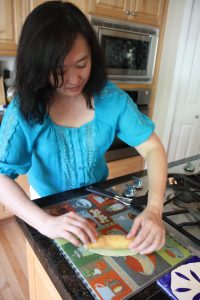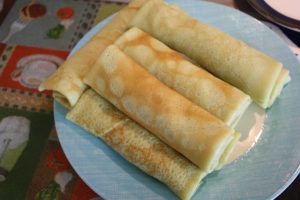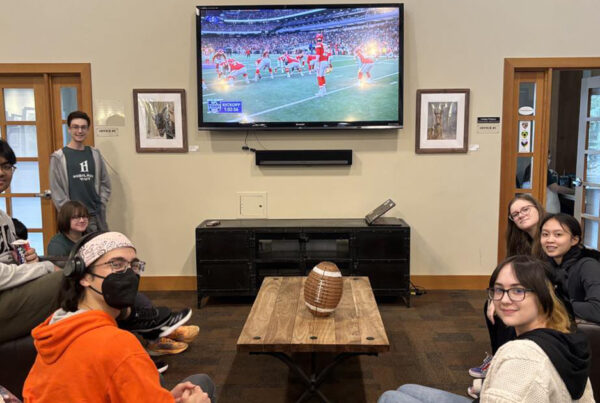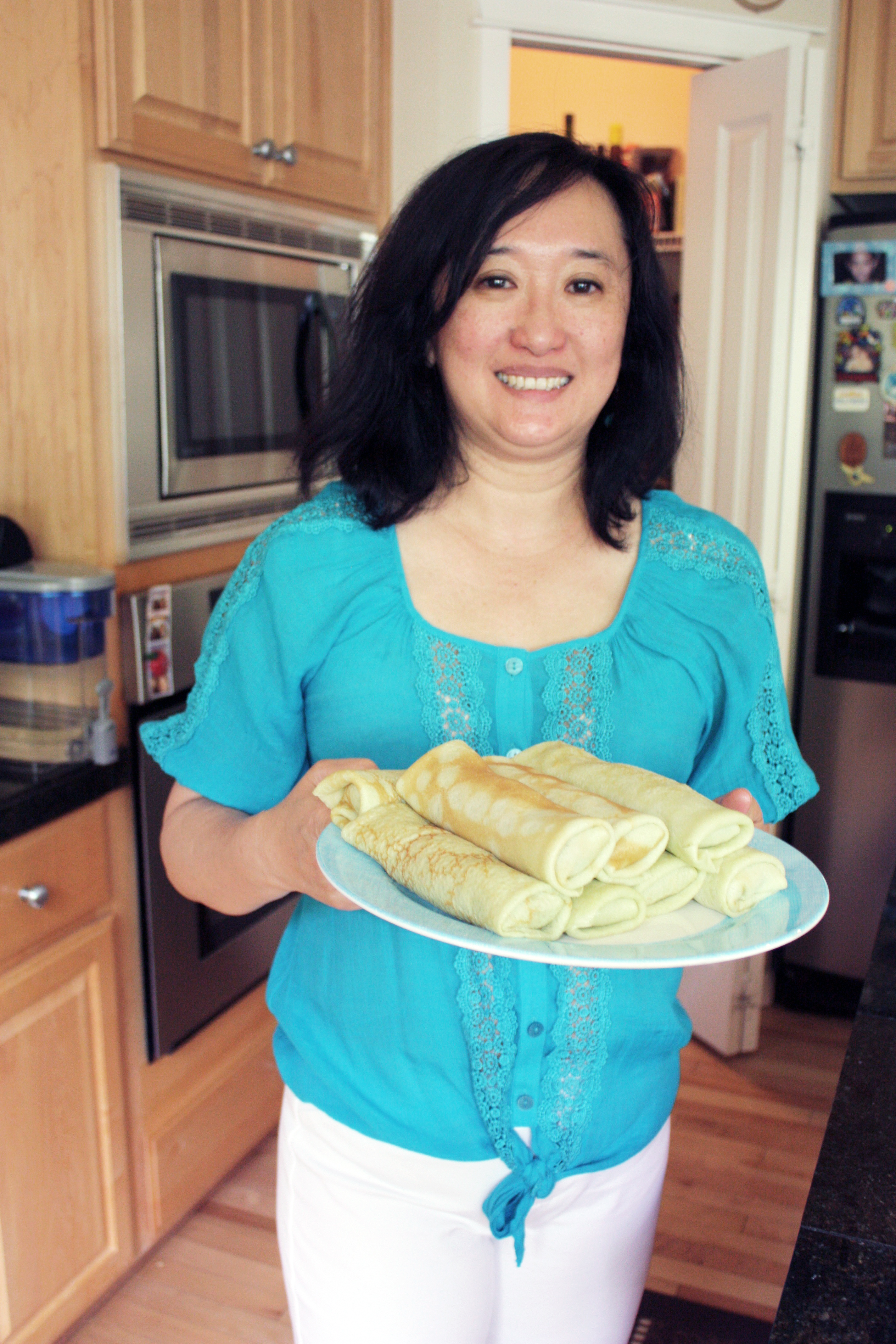
By Resident Volunteer Writer, Kimberly Collette, Central Park
From July 2016 Connections News, Culture Through Cuisine
Sharon Fong has been a resident of the Issaquah Highlands from 12 years. Sharon, her husband and two kids left Malaysia when her husband’s job required a move.
On her sunny back porch where she grows vining grapes and a garden of flowers and bushes Sharon sits with her friend Robin talking. Although Sharon was planning on sharing a more savory Malaysian crepe her son Shane home from college for the summer convinced her to share a sweeter one. “He kept saying, you haven’t made them in forever,” says Sharon.
Sharon’s coconut filled crepes are a tea time treat. In Malaysia tea time is a daily tradition leftover from the time Malaysia spent under British rule.
Although 4 pm in the afternoon is usually spent shuttling kids to activities, Sharon does try to retain the tradition. She will get together with friends and everyone will bring a sweet or savory to share and tea with milk is served.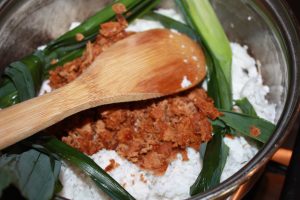
“I love making Malaysian food because I miss home so much,” she says. Malaysian food borrows spice and taste from many cultures.
Sharon made the crepe batter in the morning and let it chill in the fridge. With the more savory crepe she will use coconut milk. She didn’t want the coconut flavoring to be overpowering so she used cow’s milk. The batter is thin and tinted green. It gets the green color from a the pandan leaf. The pandan plant looks like an iris, without the flowers. They are long green flat leaves. Sharon grew them at her home in Malaysia but the cooler temperatures here make it impossible. But she finds them in the freezer section at Uwajimaya.
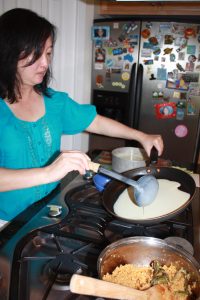 The leaves are crushed and the juice is squeezed into the batter giving it a subtle flavor and green color. Sharon says that Malaysian cuisine relies on natural food colors. There is a small blue flower that is steeped and used in pastry recipes to tint it blue. But she can’t find the flower here in the States.
The leaves are crushed and the juice is squeezed into the batter giving it a subtle flavor and green color. Sharon says that Malaysian cuisine relies on natural food colors. There is a small blue flower that is steeped and used in pastry recipes to tint it blue. But she can’t find the flower here in the States.
Sharon places the batter on the counter to warm up a bit and turns her attention to the filling. Frozen grated coconut is put in a sauce pan along with grated palm sugar and a couple of the pandan leaves. The palm sugar has a wonderful flavor that is more than just sweet. Sharon adds a bit a water to the mixture as it cooks on the stove.
She heats up a fry pan. The batter is ladled into the hot pan as Sharon swirls it around to coat it. “The first one always messes up,” Sharon says with a laugh. She is right. The crepe cooks too long before it’s released from the pan. The goal is to cook it on one side enough that it’s cooked through but light enough that the crepe retains its green color.
Sharon sprays the pan with a little Pam and the next one slides off cooked but still green. It’s filled with the coconut filling and rolled. They are eaten warm or cold depending on preference.
1 cup flour
2 large eggs
2 pieces of pandan leaf
1 ½ cup coconut milk / fresh milk
1 ½ tsp salt
2 tbsp vegetable oil
Few drops of coloring (you can use the blended pandan leaf for the color. A few pieces of pandan leaf, blend it till it’s fine and add a little water to get the green color)
INGREDIENTS FOR FILLING
1 packet grated coconut / dessicated coconut
¾ cup brown sugar / palm sugar
1 piece of pandan leaf
METHOD:
- Mix the flour and the salt together into a bowl. Add the milk / coconut milk and the coloring. Blend it well. Then add the egg and vegetable oil. Use the hand blender to mix it well.
- Heat a pan on medium flame till it’s hot when you hover your hand over the pan. Pour in one big ladle of batter, and swirl the batter till it creates a circle. When batter is cooked, removed from pan onto a flat surface. You don’t need to flip the crepe.
- Add the filling at the closest end of the crepe and then roll it like a spring roll. Make sure the sides are folded in so that the filling doesn’t spill out.

